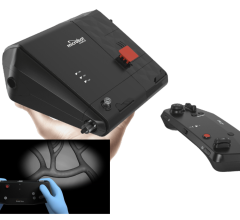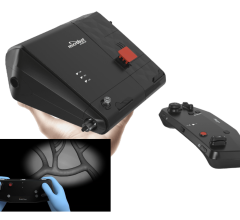November 14, 2011 – OrbusNeich announced the introduction of the Combo dual therapy stent during a breakfast symposium chaired by Martin B. Leon, M.D., professor of medicine and director of the Center for Interventional Vascular Therapy at Columbia University Medical Center, New York, at Transcatheter Cardiovascular Therapeutics (TCT) 2011 in San Francisco.
Leon introduced the Combo stent as the first in a new category of dual therapy stents (DTS). Combo leverages a partitioned effect that combines an abluminal sirolimus drug elution for the control of neointimal proliferation with OrbusNeich's Genous pro-healing technology for the acceleration of endothelial coverage.
"The Combo dual therapy stent is OrbusNeich's latest innovation to leverage Genous, our proprietary pro-healing stent technology, to address the significant clinical risk of delayed or absent healing that faces drug eluting stents today," said Al Novak, OrbusNeich's chairman of the board, president and CEO.
Interim results from EGO-COMBO, an optical coherence tomography (OCT) study of early healing with the Combo stent, were presented this morning by Prof. Stephen W.L. Lee, M.D., chief of cardiology, professor and senior consultant, department of medicine, Queen Mary Hospital, University of Hong Kong, showing that Combo achieved 70 percent strut coverage in less than 50 days.
The prospective, single center study included 60 patients treated with a total of 87 Combo dual therapy stents. Frequency domain (FD) OCT was performed serially at baseline post-stenting, at early follow-up to determine early neointimal healing and at nine months to determine OCT late loss. The percentage of healed struts was used as a proxy for endothelial coverage, the most powerful predictor of stent thrombosis (ST). According to Finn et al., the odds ratio for thrombus for a stent with 30 percent uncovered struts is 9 (95 percent, CI, 3.5 to 22) compared to that of a covered stent(1).
At the time of presentation, 60 patients were enrolled and 40 had completed OCT follow-up. A total of 7,004 frames with 60,069 struts were analyzed, and the mean percentages of covered struts were 74.4 percent at two months, 84 percent at three months, 87.4 percent at four months and 95.6 percent at five months. Furthermore, no major adverse cardiac events (MACE) were recorded.
"The original endothelial progenitor cell (EPC) capturing stent is very likely pro-healing, whereas the Combo stent has a dual therapy benefit, achieving both optimal neointimal suppression (less restenosis) similar to other DES while retaining the pro-healing EPC capturing capacity," said Prof. Lee. "This is the first study showing data establishing the early healing profile of a DES, that is, the Combo stent. With strut coverage approaching 70 percent in fewer than 50 days and complete coverage around 140 days by FD-OCT, physicians may feel comfortable reducing the duration of DAPT when it is deemed clinically necessary. Long-term clinical follow-up data will confirm such benefits."
Ulf Landmesser, M.D., Ph.D., professor of cardiology and head of acute and invasive cardiology at the Cardiovascular Center, University Hospital of Zurich, presented the study design and concept of the randomized REMEDEE OCT Study (Randomized Evaluation of an abluMinal sirolimus coatED bio-Engineered stEnt), which will compare strut coverage of the Combo dual therapy stent versus that of everolimus-eluting stents at 60 days by OCT as the study's primary endpoint. The multicenter study will enroll 60 patients presenting with an acute myocardial infarction (MI) with single de novo native coronary artery lesions, including those with ST-elevation myocardial infarction (STEMI) and non-STEMI, randomized 1:1 to the control arm. Additionally, the investigators will determine the correlation of the strut coverage with the titer of circulating EPCs and the correlation of strut coverage with lesion morphology with intravascular ultrasound (IVUS). Currently, three out of six sites are enrolling, and 13 patients have been enrolled.
(1) Finn et al. Circulation 2007;115;2435-2441
For more information: www.orbusneich.com


 November 18, 2024
November 18, 2024 







